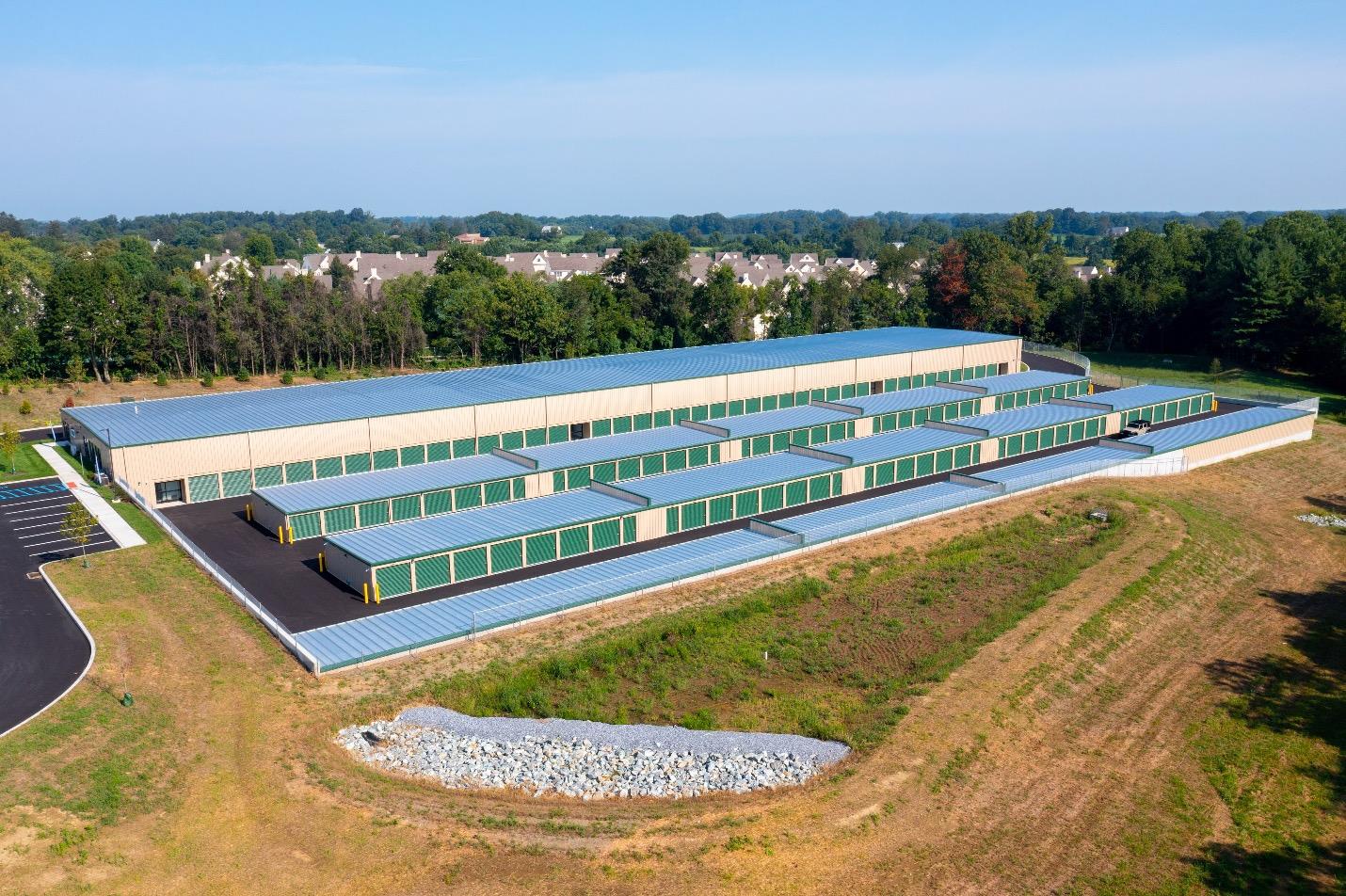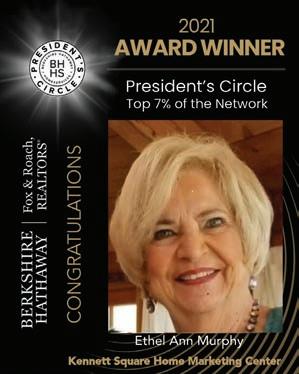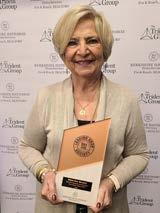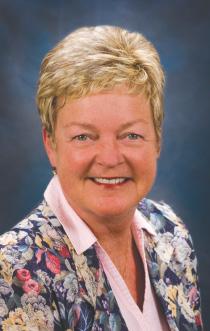




























































































































Table of Contents








































































































































In a busy town like Kennett Square, Daniel Embree, the executive director of Kennett Collaborative, may be its busiest individual. He directs the operations of a visible and engaged agency. With a summer full of activities ahead and with fall and winter festivals on the horizon, Embree took a few minutes from his hectic schedule to talk with Kennett Square Life about the value of Kennett Collaborative’s impact on the local community, celebrating Kennett Square’s diversity and a new food favorite he recently found at the KSQ Farmers Market.
This issue of Kennett Square Life also includes a profile of Greg Flegal. Flegal helped support himself during college doing construction, built homes for decades and is also known for crafting almost anything that customers want out of wood. He now finds joy in taking the sawmill on the road and turning logs into boards that will soon become treasures.
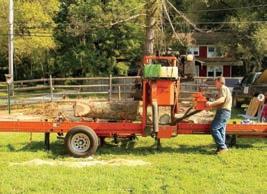
The eyes of Kennett Square will be focused upward on Sept. 29, gazing at a unique fundraiser brought to town by Camp Dreamcatcher. Patty Hillkirk, executive director of this non-profit that caters to the needs of children and their families affected by HIV/AIDS, has announced that volunteer contribution solicitors – referred to as “Superheroes” -- will be rappelling down Franklin Center Building all through the day.
This issue also shines a spotlight on the Kennett High School Orchestra, which originated in the 1930s and has been presenting musical bouquets for the district and community ever since.

Gene Pisasale, a local writer and historian, takes a look at the history of the Old Kennett Hotel, a historic landmark.
In the story “To enjoy every sandwich,” writer Richard L. Gaw shares how Barry Fragale, in the days and weeks following his severe accident last August, found hope in the love he received from his family and his friends. In a time of crisis, Kennett Square responded and they haven’t stopped since, and they continue to lift his spirit and his soul.
In our photo essay, photographer Jie Deng trained her camera on Bill Thomas, who started Bills Khakis, which eventually grew into a multi-million-dollar business distributed through 500 specialty stores around the country and a 70-page catalog. The Unionville resident recently launched PennBilt, a new brand that picks up where Bills Khakis left off.

We hope that you enjoy these stories, and as always we welcome your comments and suggestions for stories for an upcoming issue of Kennett Square Life. We’re already hard at work planning the next issue, which will arrive later in 2023. Until then, enjoy the Mushroom Festival and the many other summer events in and around town.
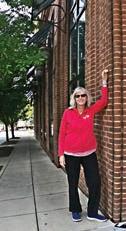
Sincerely,
Randy Lieberman, Publisher randyl@chestercounty.com, 610-869-5553 Steve Hoffman, Editor editor@chestercounty.com., 610-869-5553, Ext. 13Cover design: Diane Blanche Stirrat
Cover photo: Jie Deng
For 30 years, Greg Flegal looked for his perfect niche, and he found it in the Wood-Mizer LT40, a brightorange, two-ton hydraulic portable sawmill that he named Olivia Jean.
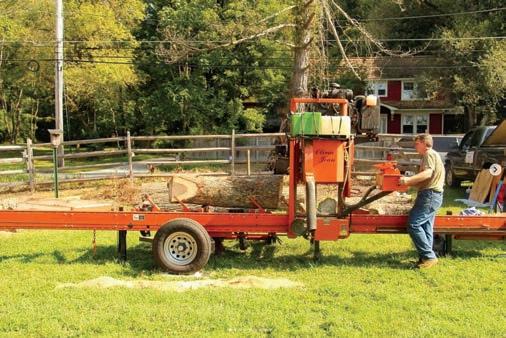
Flegal helped support himself during college doing construction, for decades built homes and is also known for crafting almost anything that customers want out of wood. He now finds joy in taking the sawmill on the road and turning logs into boards that will soon become treasures.
He also uses the sawmill at his own home, on the outskirts of Kennett Square, set among a grove of mostly poplar trees, with varied outbuildings and piles of varied types of wood, for varied uses.
“Ever read a really good book and can’t wait to turn to the next page?” he asked. “That’s what I feel about wood. I just love wood.”
His niche has sent him and Olivia Jean many miles in all directions, almost daily in the pandemic when so many people were working on home projects, and sometimes stymied by the high prices and unavailability of lumber. The next-nearest portable sawmills that he knows of are run out of Lancaster.
Flegal, who’s 61, was born in West Virginia and moved to Chadds Ford in 1968. At Unionville High School, in an English class called “Search for Self,” he met his wife, Linda. She handles the business side of the business, and he handles the creativity.
“Together, we know a lot,” Linda said.
Olivia Jean’s power
The Flegals bought their land in 1987, subdividing it and building and selling two other homes before they and their five children settled into the Dutch Colonial they built for themselves.
He used to rely on a portable sawmill run by Dick Inglis, who was almost 90 when he retired. Flegal bought Olivia Jean in 2011 and left his homebuilding company when son Matthew left the family business in 2019.
An LT 40 runs on either gas or diesel and can cut logs up to 36 inches wide, 21 feet long and as many as 4,400 pounds, and can produce up to 550 board feet of work in an hour.
It’s definitely a tough machine (a demonstration cut took less than a minute), but
“You never know what you’re going to find inside logs,” Flegal said, showing off a clothesline pulley that a tree had grown over. Other blade-stopping discoveries have
included a horseshoe, a spotlight, barbed wire and bullets.
Walnuts are particularly problematic for the old-time habit of planting them near fencing, and he finds barbed wire in one out of three walnuts. Good thing black walnut is one of his favorite woods.
Flegal owns 60 or 70 blades and brings six or eight for
each job, because blades will only cut about three logs before they need to be resharpened.
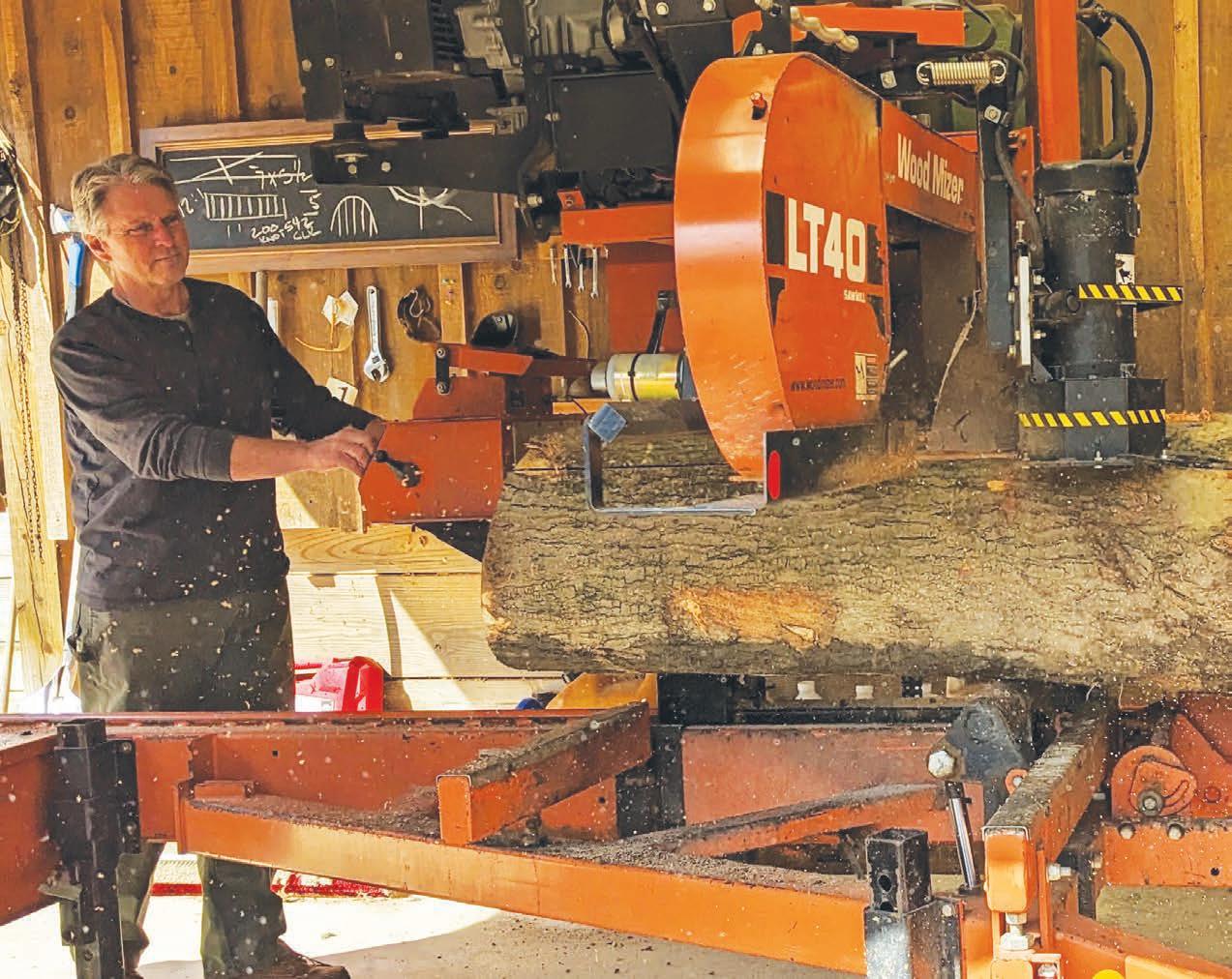
Many steps follow
While he’s out with his sawmill, Flegal loves the chance
Continued on Page 12

Continued from Page 11
to meet and talk with so many people, and that friendliness showed up for years at Chadds Ford Days, when he joined a crew demonstrating how to saw and manipulate wood using hand tools.
The logs in the mill can be wet, with sap or water, or dry(ish). The boards need more work before they can be used. A fresh tree is about 40 percent moisture, and at home, Flegal has pile after pile of boards neatly stacked, with small spacers in between the layers to allow drying air to circulate. It usually takes about a year per inch of thickness to dry to 12 percent, the general humidity in Chester County, he said.
Solar kilns, which look like large cold frames, can speed the process. The drying is finished in kilns – 110 degrees for 24 to 36 hours – to bring the moisture down to 10 percent and kill any lingering insects.
He relies upon his memory to maintain his wide-ranging inventory –pieces drying, pieces ready to use or sell, pieces to be burned, pieces of different shapes, pieces of different woods.

He figures the sawmill is 98 percent efficient, considering the boards that are produced, the sawdust that becomes cattle bedding and the scrap pieces that he uses to heat the buildings. Something could be made
Continued on Page 14
Residents have the comfort of knowing that they can receive personal care without having to move. Care is brought to them. Quality of life, combined with a comfortable setting, makes Friends Home unique. It is the residents who fill the community with their vitality and spirit that make this a very special place, indeed.


“Last weekend I sawed up this beautiful red oak that we had taken down,” Flegal wrote on Instagram last year. “It was leaning too close to the house! It opened up the sky above the house and provided some beautiful boards. Now I’ll have to make something out of it.”


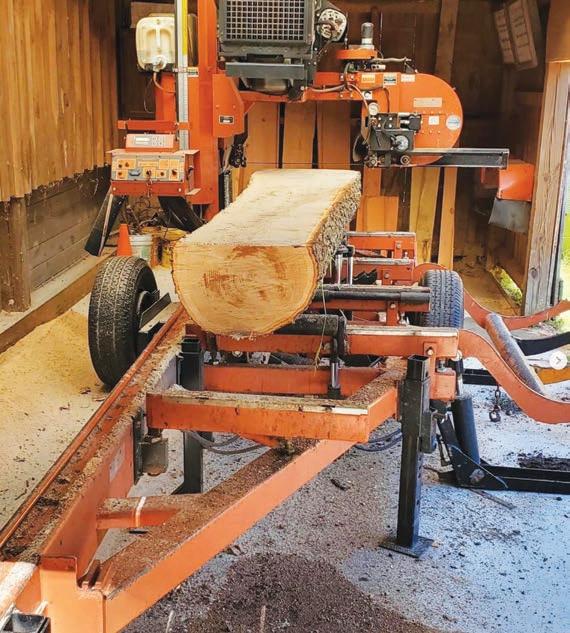
Continued from Page 12
out it, with enough imagination. Consider the discs that they used as chargers for daughter Lydia’s wedding reception and that one with a see-through hole that Linda used to shoot photos.
Two piles held pieces from a Longwood Gardens treehouse that had started to decay. He was hired to craft the replacements, and someday he’ll figure out uses for what was taken down.
Flegal also makes furniture, doors, serving boards and charcuterie boards.

Continued on Page 16










Continued from Page 14
“If it’s made out of wood, I can probably do it,” he said. He has even constructed a 16-foot-long bridge for Chadds Ford Days.
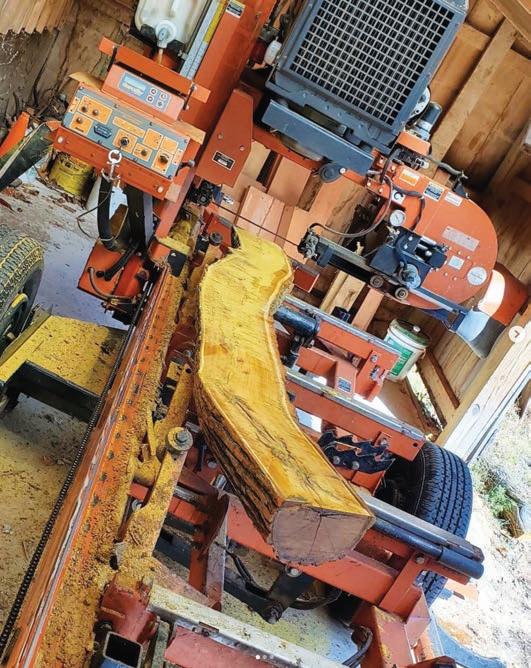
On a recent day, a Douglas fir sat on Flegal’s workbench that would soon be made into a cross for his church, Grace Fellowship.

Another area held stacks of serving boards, starting at $45, and charcuterie boards, starting at $100. One distinctive quality of these boards is the way he often uses multicolored epoxy resin to fill in natural gaps in the wood. He sells the boards at the Chadds Ford Pennsbury Antique Mall and on Facebook Marketplace. The sawmill business runs out of www.gregoryflegal.com.
Throughout the property, Flegal couldn’t stop admiring the patterns and colors of the grain, sometimes accented by a fungal contamination called spalting.
“I think all the wood is gorgeous,” he said. “God made it. All I did was find it.”
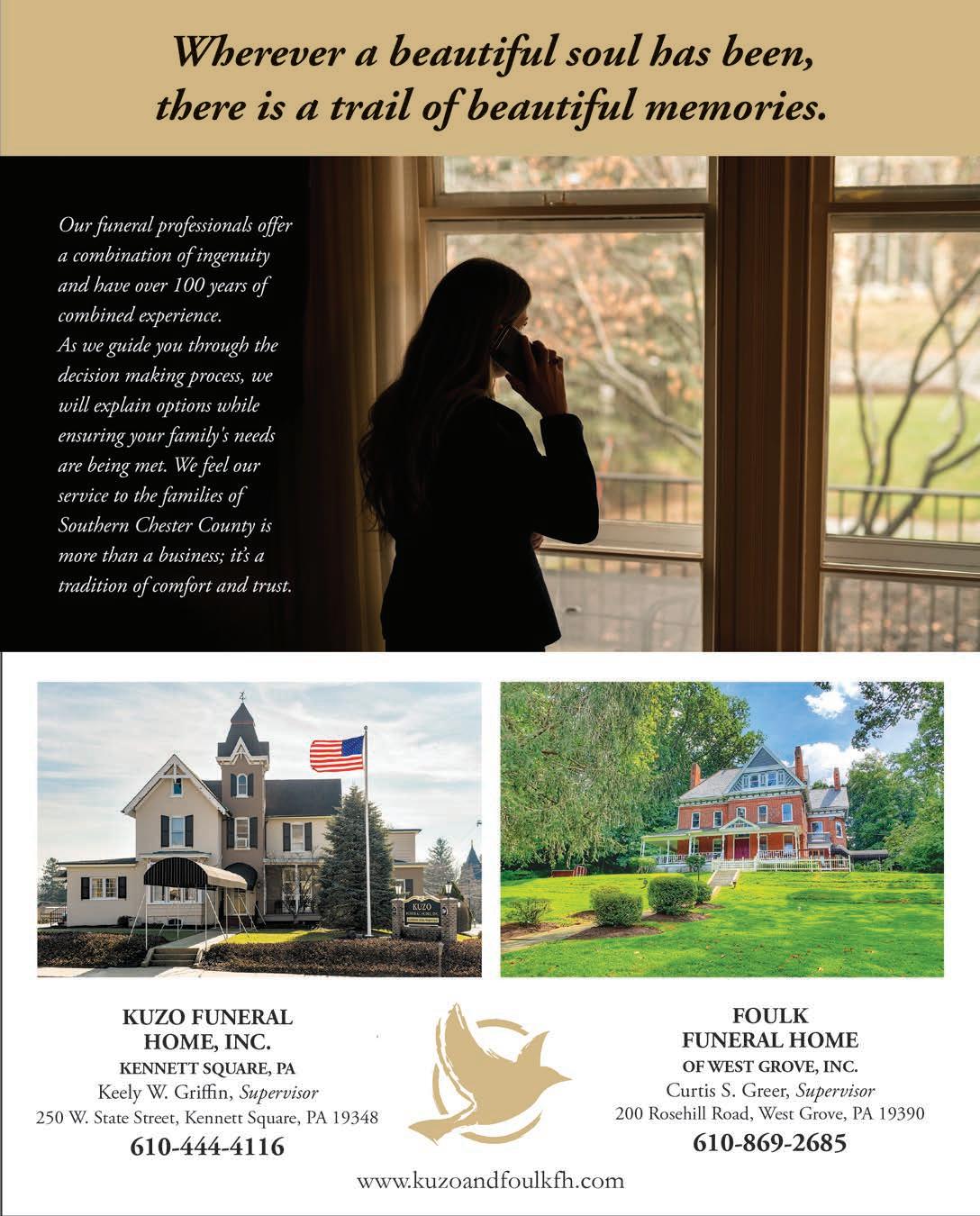
When Ben Beiler began his real estate career with Jim Arnold in the white building at the intersection of Route 1 and 41 in the early 1970’s, they had a handful of agents and an aspiration to grow the business one customer at a time, with a commitment to treat everyone with respect and loyalty.
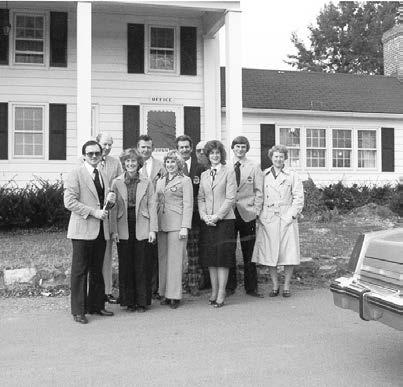
Today, Beiler-Campbell Realtors is led and owned by Anthony Beiler and Brian Campbell, and is celebrating its 50th anniversary as one of the leading real estate companies in southern Chester and Lancaster Counties.
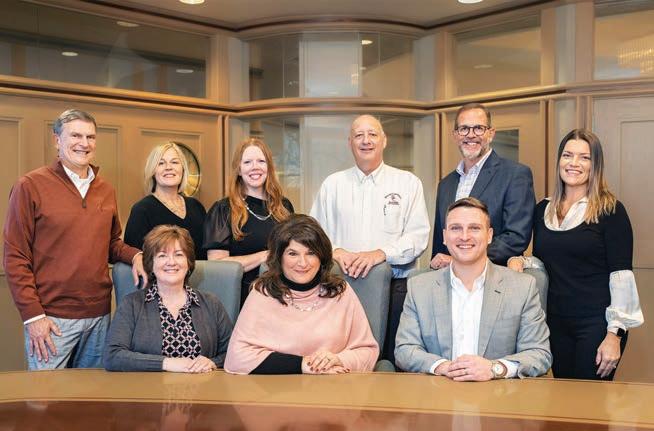
Ben purchased the company - then known as Arnoldmont Realty - in 1973. Brian Campbell joined the business in 1979 and later became partner with Ben. Ten years later, Ben’s son Anthony Beiler joined the company and later became a partner with Brian. Beiler-Campbell expanded to offer appraisals and opened additional offices in Kennett Square, Oxford and Quarryville. A Farm and Land Division and Auction Services were added that serves throughout western Pennsylvania and northern Maryland, as well as a Commercial Division.
Recognizing the needs of clients to have access to all transaction services under one roof, Beiler-Campbell also founded a title company –
Anvil Land Transfer – and a mortgage company – Delaware Valley Financial Mortgage.
Over half a century, Beiler-Campbell has helped thousands of families, individuals and businesses open the door to a new chapter of their lives and their livelihoods.
Every transaction, every handshake, every late-night phone call with a client and every closing when keys are handed to a new homeowner, stems from the vision that Ben Beiler had to build a company that could serve the community with excellence.
“My father already had a lot of connections in the community – particularly in the dairy business – and what he saw early on was the natural gravitation of people who wished to move from the eastern part of the Route 1 Corridor to the western part,” said Anthony Beiler, President of Beiler-Campbell.
Anthony Beiler is quick to acknowledge that their years of growth wouldn’t be possible without their clients and their team of agents.
“We never forget that we owe our growth to the efforts of each team member, our families, and our clients,” he said. “We are grateful for the trust our clients placed in us over the years. We have a responsibility to hold ourselves to high professional standards in conduct, speech and attitude.”
As in nearly every facet of modern life, the real estate industry has evolved to a streamlined world of communication and online transactions. Beiler-Campbell has mastered the art of utilizing forward edge technology while nurturing the face-to-face personal connection that clients desire.
“We stay on the forward edge of technology,” said Board Chairman Brian Campbell. “We provide our agents with the current tools, resources, experience and knowledge for them to succeed, but so much more importantly, it begins by hiring the right individuals. We have been blessed along the way by these phenomenal people, some of whom have been with us for as long as 40 years.”
“We treat everyone in our company like they are a member of our family. We help them to succeed, we bring continued education to them, and we want them to know their field. If you are able to build trust with your clients, develop authentic relationships and are excellent in your field, you will thrive.”
There is an intangible linked to the growth Beiler-Campbell has experienced over the last six decades that may not be named in the sales projections or end-of-the year financial reports. Nonetheless, it has become the fabric of the company.
“I give a lot of credit to my father, because his philosophy was always to maintain a high level of integrity, serve the people and place their needs above our own,” Beiler said. “The culture of service and support has been strengthened as likeminded individuals joined the team over the years. We have an outstanding management team that share in the vision that we are customer-based. We start by building a relationship with our client, understanding what they are looking for, and then serving their needs – all with a high level of service and integrity. It’s not about pushing transactions through, but rather building relationships in the community. Being a locally owned company gives us the heightened responsibility to do business in a way that benefits our entire community.”
Soon after Campbell began at the company in 1979, he learned a lasting lesson from Ben Beiler.

“He gave me great counsel and mentorship,” he said. “I remember one challenging transaction Ben told me, ‘Ask yourself, ‘What is right and what is wrong?’ I was a young guy just starting in the business and Ben demonstrated that it is about doing the right thing based on Christian principles. He always said that if we take care of people with exquisite service, the rest will take care of itself.”
From management to the sales agents to the administrative staff, “we have a remarkable company culture, and we all sup-
port each other,” said Marketing Director Kristine Pirrung. “We celebrate our individual milestones and are also there for each other when someone is going through a challenge.
Beiler-Campbell has an atmosphere of positivity – a feeling of wanting the best
for each other and the people we serve.”
The commitment that Beiler-Campbell has for the community goes far beyond real estate. It’s a priority to Beiler-Campbell to give back to the community. It’s common to see them coaching youth sports, volunteering for local organizations, serving on local non-profit and civic boards and in places of faith. In addition to sponsoring a variety of local teams, community events and groups, the company holds two annual charity events: a Day of Service with Food Drive and a Charity Golf Tournament. The Day of Service’s goal is to serve local homeowners who need a helping hand and non-profits. They go into the local community to help with lawn care, painting, building, cleaning, repairing.
The annual Charity Golf Tournament is generously sponsored by local businesses and private individuals and donates upwards of $40,000 to local nonprofits every year. “Years ago, Ben suggested that managers and owners get involved with one or two nonprofits, so the call from him was to give back to our community,” Campbell said. “While it sounds great that we are serving, whatever we give, we get back ten-fold. The joy and spirit of helping others becomes a feeling that we treasure.”
“For the past 50 years, the staff and agents at Beiler-Campbell have been honored to be a part of what is often the most important transaction in a client’s life.
“For the seller, their home has rewarded them and opens the next chapter of their lives, and on the buyer’s side, they are equally as excited to begin the next chapter of their own journey,” Campbell said. “To know that we have been the fabric that helped make that happen continues to bring us great joy.”


In 1952, two separate fires that occurred within six months of each other raged in downtown Kennett Square. The first, on March 11, damaged Freter’s Drug Store. The store was later sold, refurbished and re-born as Connor’s Drugs. The second, at 5:15 a.m. on Aug. 5, severely damaged a building whose origins dated to before the American Revolution—the old Kennett Hotel.
The event was a shock to local residents, whose parents, grandparents and great-grandparents had known the hotel as a fixture of the local community.
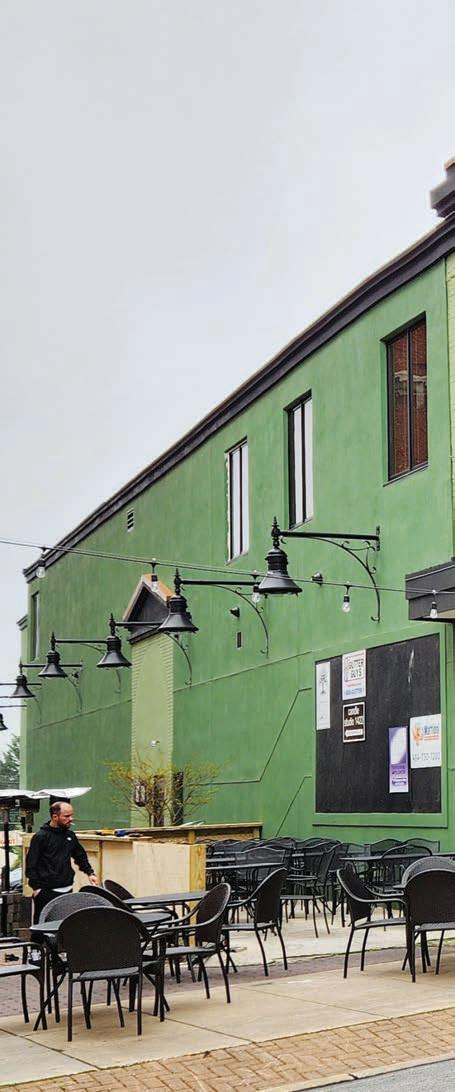
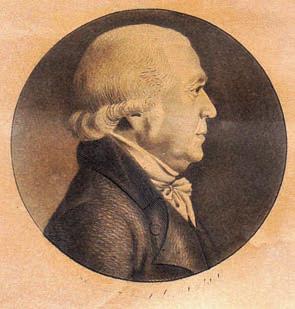
The Kennett Hotel (also known as the Hotel Kennett) was a half block east of another historic structure—the Unicorn Inn on the south side of State Street. The hotel’s origins began with Joseph Musgrave in 1768, considered to be one of the earliest settlers and the founder of the village of Kennett Square. Musgrave built a two-story brick home and later sold it to Colonel Joseph Shippen, uncle of Peggy Shippen. Peggy Shippen’s footnote in history is due to her being the wife of Benedict Arnold. The Shippen’s house was commandeered and occupied by British General William Howe in the lead-up to the Battle of the Brandywine on September 11, 1777.
Continued on Page 22
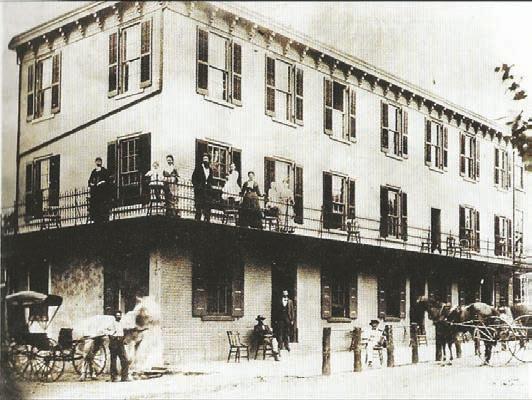
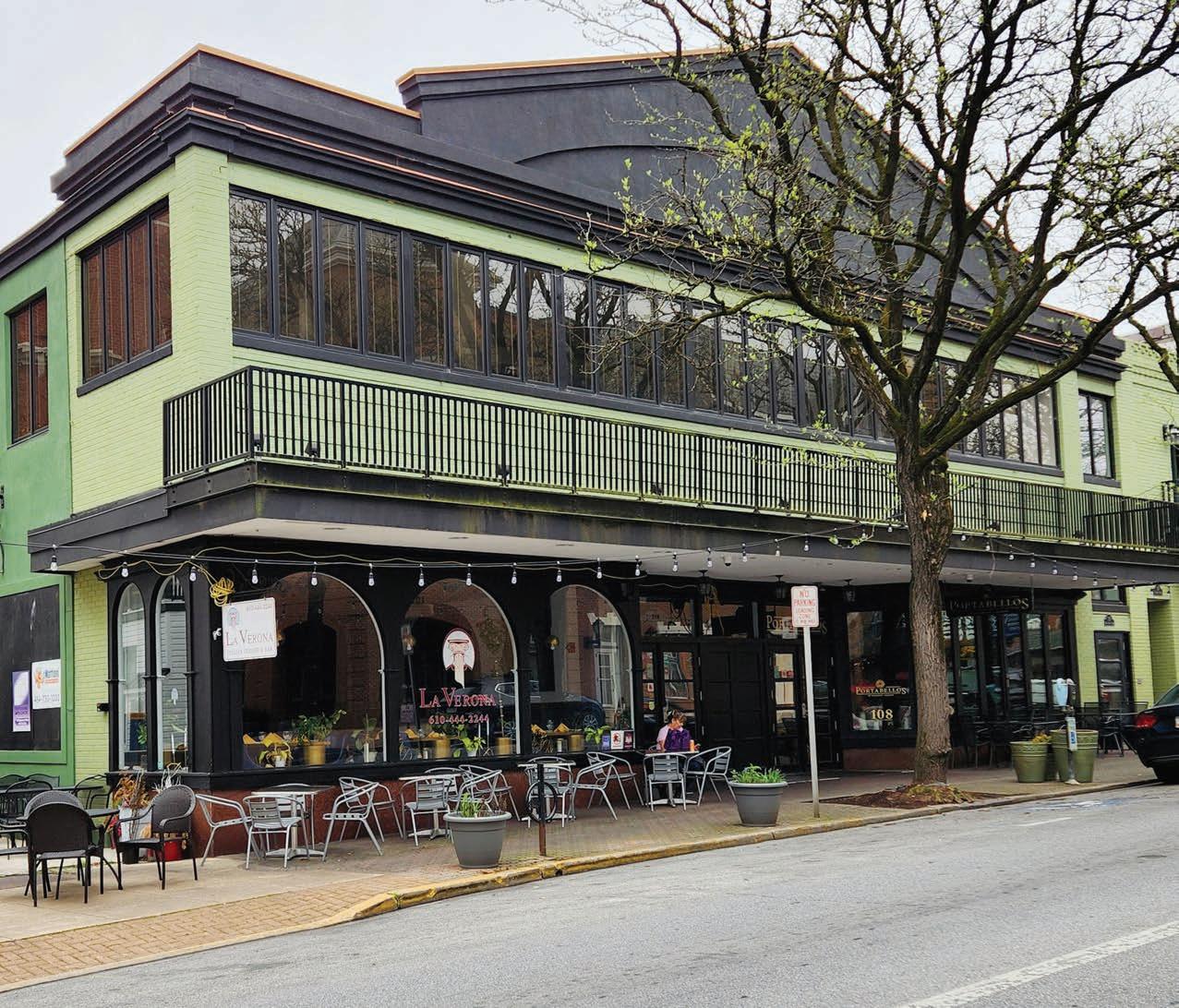
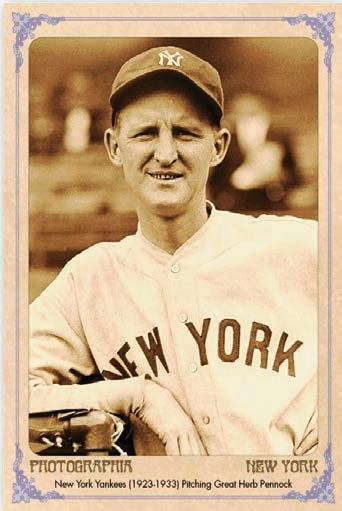
Continued from Page 20

Continued from Page 22
The structure had numerous owners. In the 1790s, Shippen sold the property, and by 1804 Jessie Sharp operated a store and a Post Office in the building. The property was later sold to John Taylor, the uncle of author and diplomat Bayard Taylor. In 1831, Taylor sold the building to Harlan Gause, who turned it into the Kennett Hotel. Over subsequent decades, the building was refurbished and enlarged, first to three stories in 1880 and later to four stories in the mid-late 1890s, with prominent turrets on each corner facing the street making it a distinctive site on the landscape.
In Greeting from Kennett Square 1855-2005, authors Joe Lordi and Dolores I. Rowe detail the history of the hotel. In 1903, Joseph O. Freck was the new owner. He was the proprietor until his passing in 1946. Freck was the father of Esther Freck, future wife of baseball Hall of Fame pitcher Herb Pennock, who stayed at the hotel on occasion. In 1950, three men—Joseph Kanofsky, George Freter and Benjamin Cohen took ownership and made extensive refurbishments, only to see it go up in smoke just two years later. The August 1952 fire did such devastating damage to the structure that the building was razed the next year.
Continued on Page 24
Continued on Page 22


Continued from Page 22
Rising from the ashes was a newcomer to Kennett Square— the J.J. Newberry Company, which constructed a new building at the site. On March 17, 1955, Newberry’s department store opened, providing a wide variety of items for local shoppers. Newberry’s quickly became quite popular.

Many Kennett Square residents today recall the store with fond memories. Newberry’s had three levels, with an escalator running up and down to different departments. Lolly Miller said, “I loved Newberry’s… you could get anything there… ride the escalator down to the toys and
Continued on Page 26



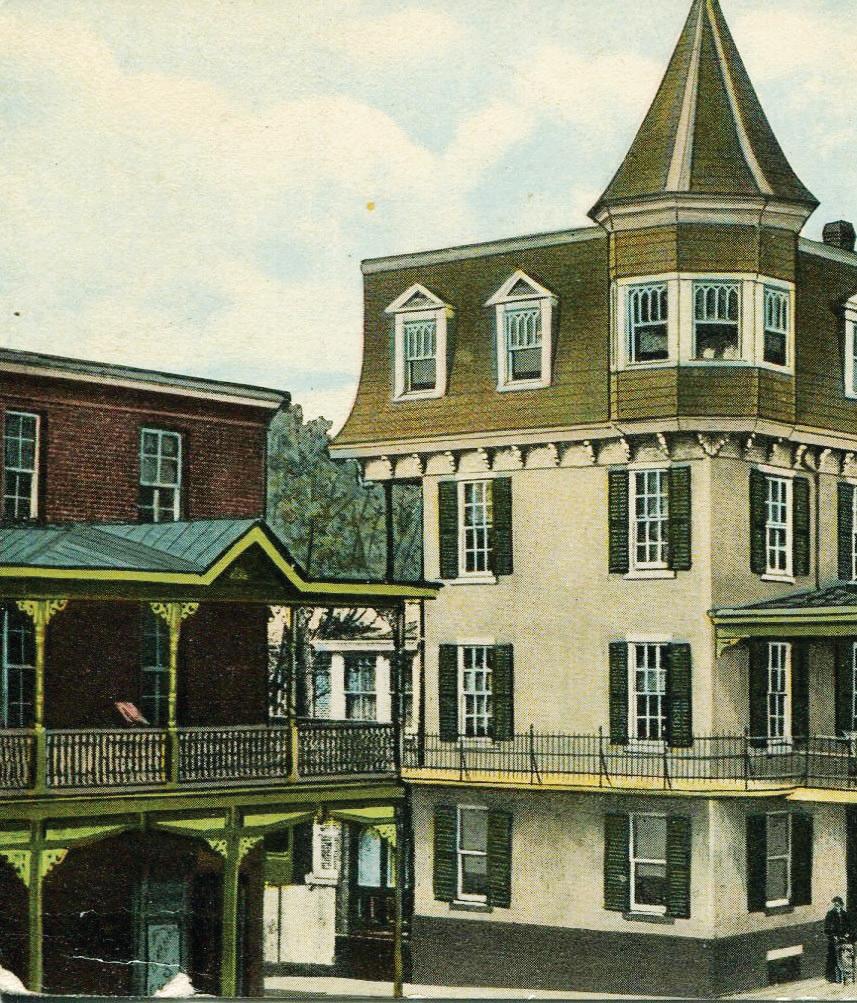
Continued from Page 24

the pet department… and ride it up to the fabric department… shoes, candy, stationery and clothes and makeup on the main floor… not to mention the lunch counter… I do remember the mini pet store. I think I can still hear the birds chirping in my memories!”
Times change. Trends come and go. On February 11, 1995, a headline in The Philadelphia Inquirer announced the sad news: “A Kennett Square fixture fading away: the once-thriving Newberry’s is preparing to close its doors.”
Helen Zook, a 19-year employee was not pleased with the news of the only area department store closing. “I’m really going to miss this place,” said Zook, who was the store manager. Many residents took the news with deep regrets, saying Newberry’s was one of their favorite stores and when it was gone, they would not be going shopping in the area again.
After Newberry’s closed in 1995, several different
restaurants operated in the building, including Newton’s. The last one may be the success story many are hoping for. La Verona is now a very popular eatery, its homemade pasta and variety of Italian dishes pleasing locals now for several years. With a full bar, live entertainment on weekends and an extensive menu and wine list, along with catering, the owners of La Verona hope to be pleasing guests for many years to come.
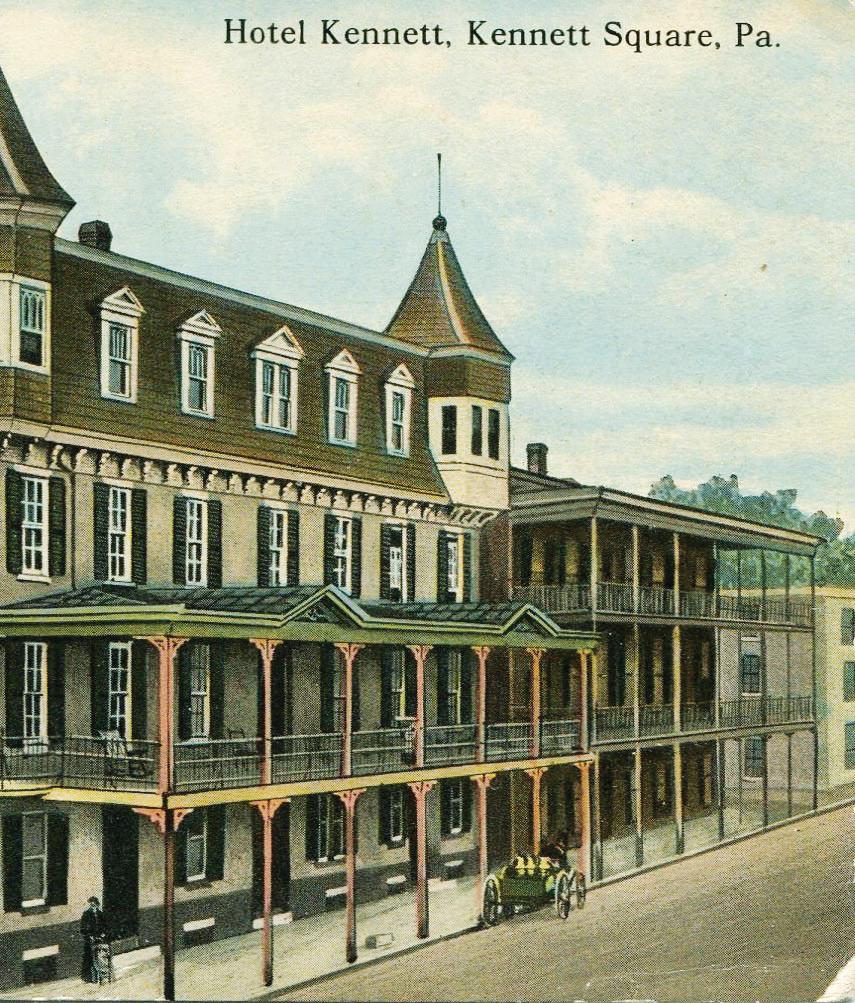
Gene Pisasale is an historian, author and lecturer based in Kennett Square. His ten books focus on the history of the Chester County/mid-Atlantic region. His latest book is Forgotten Founding Fathers: Pennsylvania and Delaware in the American Revolution. Gene’s books are available through his website at www.GenePisasale.com and also on www.Amazon.com. He can be reached via e-mail at Gene@GenePisasale.com.


Continued from Page 28

The Kennett High School Orchestra took root in the 1930s and has been presenting musical bouquets for the district and community ever since.
At 53 members strong, it doesn’t show any signs of slowing down and can boast of being one of the first high school concert bands in Chester County.
Jessica Williams, the Middle School and High School Band director, stands energetically at the helm of the program, and she said that she considers all of the members musicians, regardless of their skill level.
The majority of the orchestra members come to her and the high school handy with their brasses, woodwinds and strings because they have been taking lessons for years already— as early as elementary school.
“My expectation is that they have previous experience,” she said.
It’s heartening, she added, that the school district provides musical instrument training to the students from their earliest ages. The students get their musical start based on their own initiative or because of their parents’ advocacy.
Continued on Page 30

Continued from Page 29
As she takes to her rostrum at the weekly 80-minute practice in the band room, Williams guides her young musicians through their rehearsals for upcoming concerts and special events. So vigorous is her leadership that she recently noticed after one early morning high school practice she had accomplished at least half of what her personal exercise monitor watch demanded of her for a full day.
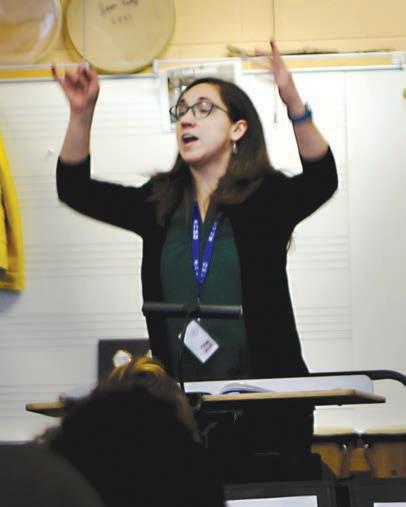
“You cellos! Play that again with more strength!” Williams urges. “Drums: You’re a little slow here! Let’s try that again!”
There is no “one kind of orchestra member,” she said. The students in the orchestra possess a variety of roles, abilities


and tools. Many of them play in the marching band as well, while others “double in brass,” playing more than one instrument and in more than one other group.
As the orchestra members gather for their weekly practices, they have their collective eyes on the approaching concerts: one in winter and one in spring.

During these performances, the audiences hear a variety of musical numbers and styles.
Williams said that while orchestras are traditionally associated with classical musical pieces from old masters like Mozart and Beethoven, she chooses styles of music whose composers span the centuries.
“The numbers they play are diverse.
Continued on Page 32

Continued from Page 31
I ultimately select, but I seek input from the students. Just today we were working on an Italian folk song,” she said. Williams added that the students generally gravitate to music that is easier to perform and upbeat, but, “I have to expose them to music out of their comfort zone. There is at least one movie or pop number in each concert,” she said. Williams said the concerts usually feature four or five selections and last about an hour-and-a-half, with a smattering of variety from another group. The student dress uniform for the performance is, “black or white on top and black on the bottom.”
An excellent performance, Williams said, not only comes from innate talent but from hard work and practice. When musicians appear to show exceptional achievement, she said there are avenues for them to pursue.
They can take on extra appearances, like the string quartet, public events or, in some cases, join the pit band (which includes adults) for musical dramatic performances. They can also try out for the regional and state student

Continued on Page 34



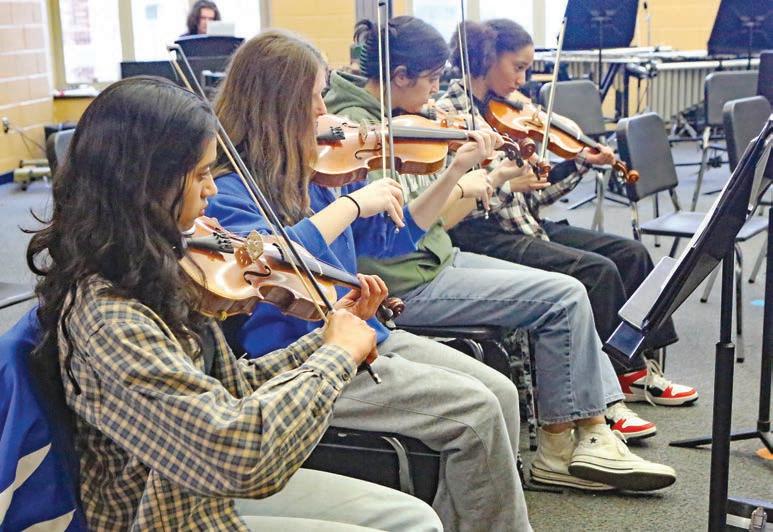
Continued from Page 32 bands, in which Kennett traditionally does well.
When Williams was asked if the orchestra members are tasked with single-mindedly playing music, she said the schedule is heavy with logistics as well as songs.
“Make sure the seating is right,” she said. “Get the room set up. Move the stuff to the stage. Print programs. Set schedules. Pick music. Assist the students for honors. After school there’s a lot of work. I try to check in with them.”
Williams, who lives in Wilmington, comes naturally to music education. Her mother is a music teacher, and her father is a professional cellist.

She grew up in Havertown and is a graduate of Haverford High School. At Temple University, she majored in music with concentrations in violin and voice.

She began her teaching career in the Red Clay (Delaware) School District and applied to Kennett High School in 2007, where she started teaching in the elementary schools. In 2013 she moved to the high school and middle school, where she remains as the director of the middle and high school orchestra.

She said she was attracted to Kennett High School, “because of the strong program they had.”
She said she is an admirer of Philadelphia Orchestra Conductor Yannick Nezet-Seguin because, “He performs a great variety of music accessible for everyone,” and violinist Itzhak Perlman because, “He is a fabulous violinist.”
Williams was asked what place music has in her life. “It means a lot to me,” she said. “It’s my fulfillment, my therapy. It’s my community and my building of friends. We need it as part of living.”


In a busy town like Kennett Square, Daniel Embree, the new Executive Director of Kennett Collaborative, may be its busiest individual, directing the operations of a visible and engaged agency. With a summer full of activities ahead and with fall and winter festivals on the horizon, Embree took a few minutes from his hectic schedule to talk with Kennett Square Life about the value of Kennett Collaborative’s social impact on the local community, celebrating Kennett Square’s diversity and a new food favorite he recently found at the KSQ Farmers Market.
Kennett Square Life: You began at Kennett Collaborative in January with a proven track record of non-profit management, strategic planning and community engagement, but I wish to know if there may have been an event you saw in Kennett Square that first inspired you to pursue the job.
Embree: If I’m being honest, it was when I found out that Kennett Collaborative is the organization behind the town Christmas Tree. I love to decorate for the holidays—and I don’t just mean Christmas. In my home, I have a gallery wall with a hanging system that lets me rotate the artwork as often as I want. I have things that I hang up for Valentine’s Day, St. Patrick’s Day, Memorial Day, and we even decorated for Friday the Thirteenth.
But yes, the winter holidays are always at the top when it comes to decorating, and so to be a part of that at a community scale was a dream that I couldn’t pass up.
Prior to joining Kennett Collaborative, you applied your skills in the non-profit sector in New York City and in Boston. It could be said that that’s the non-profit equivalent of driving 80 MPH in a 55 MPH zone. Have you felt as if you are free to drive at the speed limit in your current
position, or are you finding that it’s the same speed limit, just in a smaller town?
It’s funny how people look at New York City with a certain mystique. When I worked in New York City, I planned events and thousands of people came to them. Here in Kennett Square, I plan events and thousands of people come to them. And let me tell you, in terms of quality, the events here are every bit as high-quality as the ones I helped create there, if not more so.
I would say the biggest difference between my former roles and my current role is that Kennett Collaborative has a smaller number of people on staff, so how do we pull off such high caliber events with a smaller team? Through the people of our community. Kennett Square has an incredible, engaged volunteer force. They show up and make it happen—and all they need is a smile and the opportunity to be involved. This town has such an active, generous, community-focused group of people living here, and they inspire me.
Continued on Page 40
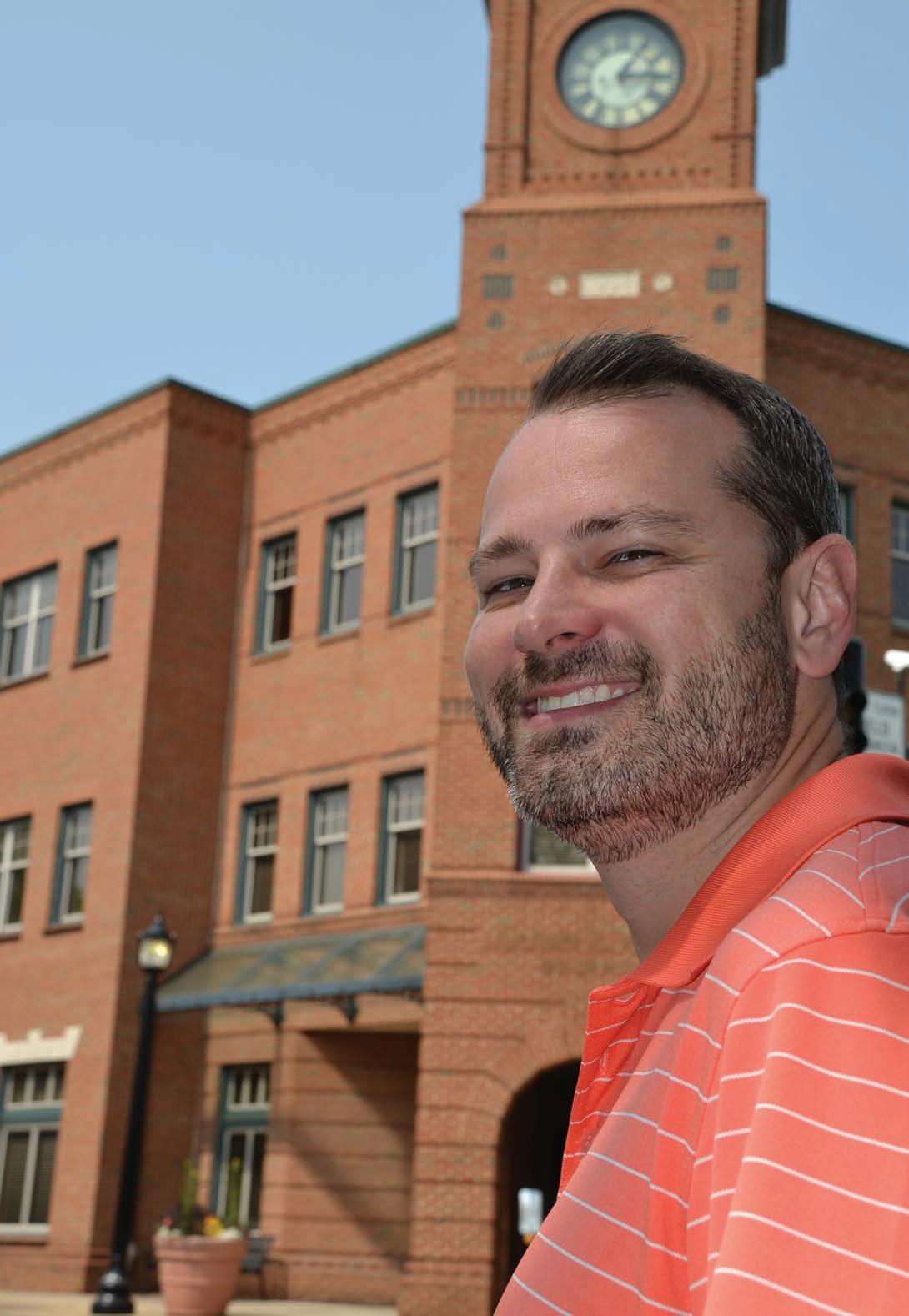

Continued from Page 38
Let’s talk about Kennett Collaborative’s great and lasting social impact on the community. Take the readers of Kennett Square Life into what that impact looks like and what it means to everyone here.

I’m actually increasingly moved by how many people do stop to acknowledge our impact. Just the other day, a couple was finishing up dinner at La Verona when they waved me down. They said that they recognized me from one of our emails, and they wanted to let me know that they were supporters of what we do – and in fact, they had recently made a donation to the organization. It was so nice and it made my day.
I moved to Kennett Square during the pandemic, and at first, I didn’t know very many people here, and I have to admit, I was actually really lonely as the pandemic wore on. As things started to open up after being shut down, I started going to as many community events as I could: Clover Market, Third Thursdays, the Memorial Day Parade, the Kennett Brewfest and the Holiday Village Market. They are all events that I went to before I started my job, and
they had a real impact on me. They helped me put down roots here.


Kennett Collaborative has a role to play in creating and maintaining what our board chair likes to call “social infrastructure.” Community events and programs are essential—now more than ever. Loneliness and the breakdown of local communities is a national, if not global problem, but I would argue that Kennett Square is well above the average
Continued on Page 42


Continued from Page 40
in terms of social connections and activity, and Kennett Collaborative is a big reason for that.
Many in southern Chester County believe that for all of Kennett Square’s commitment to building a stronger community through events, placemaking, and collaboration between the public and private sector, that it has done a poor job of addressing perhaps its most pressing reality: creating affordable housing. While Kennett Collaborative is not directly charged with the responsibility of addressing this issue, do you see it potentially having an effect on the agency?
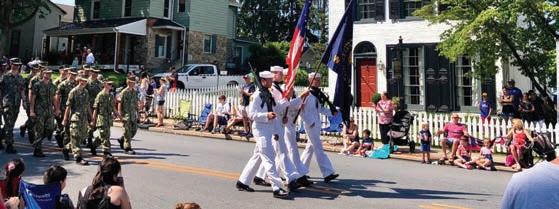
As residents of the greater Kennett area, high housing costs impact me and my staff directly—so I do think about this a lot even though it is outside of our set of responsibilites. We’re a nonprofit organization with a specific mission and specific opportunities to make a difference. We don’t have access to very many levers of power. We are not a government entity. We don’t set policy for Kennett Square, but the problem of housing
inequity is nonetheless something that needs to be addressed, and we do have the privilege—where appropriate—to share feedback with folks who do.
One of the things that I’m trying to do is make sure that we’re providing access to free public programming that enriches an economically-diverse community—and we’re funding these programs almost entirely through our fundraising efforts and private donations. Third Thursdays on State Street, KSQ Farmers Market, Memorial Day Parade, Christmas in Kennett—these are all things that everyone can enjoy.
Continued on Page 44


Continued from Page 42
Assess what Kennett Collaborative is doing to merge together its increasingly diverse population.
I enjoy the fact that Kennett Square enjoys a really great population that is diverse in a number of ways: economically, racially, and through gender expression and orientation. This is something that is not solved easily, so it must remain top of mind.
I’ll give you a small, recent example of what I think illustrates a major part of our work.
One of our upcoming initiatives is our second year of Kennett Blooms Floral Flash, inspired by pop-up installations throughout New York City by the artist Louis Miller. We bring in local floral designers, who will create pop-up displays throughout Kennett Square. As we began to decide where we would place these installations, we had many conversations that asked, “How are we engaging the community, and not by trying to bring the community to us, but how are we going to them?”
We didn’t just pick high volume locations or places along State Street that get the most visibility for a certain type of
our population. We thought about where all of our members live or spend their time, and we are trying to bring these installations directly to them.
Every agency, no matter its mission, must paint the broad strokes of its long-term vision. Where will we see the work of Kennett Collaborative being done in the Kennett Square community a decade from now?

As I begin to think about ten years from now, Kennett Square already has a lot of traditions and beloved events.
Continued on Page 46

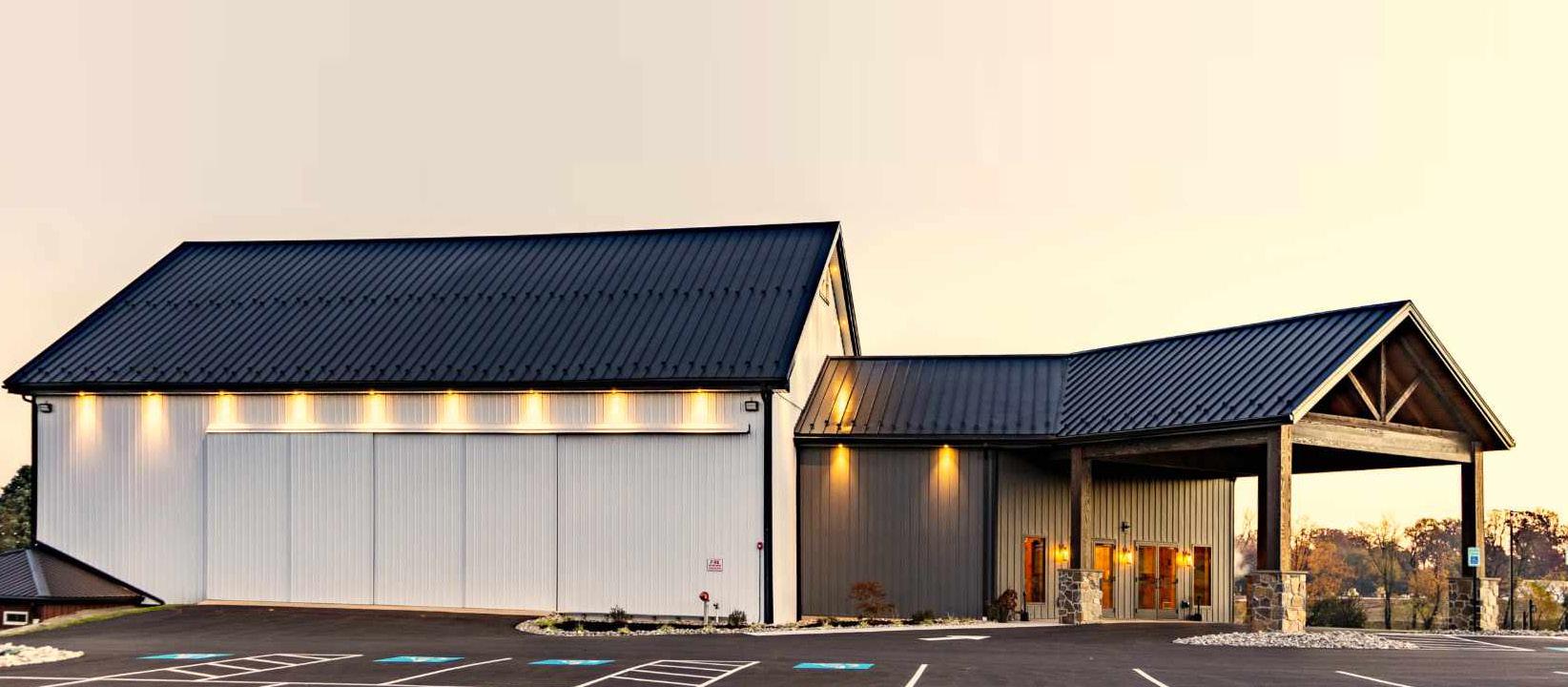
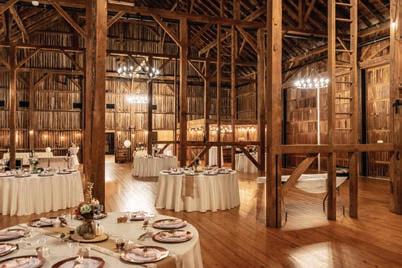

Continued from Page 44
Much of that happens because very passionate people have been making them happen for a long time. I would love to make sure those events continue well into the future by creating systems within our institutions and bringing in new energy so that we can learn from those who began these traditions. I’d like for Kennett Collaborative to play a role in creating sustainable events to keep these traditions alive and thriving.
What is your favorite spot in Kennett Square?

I really feel like you’re trying to get me in trouble with this question. It’s like asking a parent who their favorite child is. What I will say is that I enjoy so much about Kennett Square – its businesses, its restaurants and its events, I love being able to enjoy the natural areas in the Kennett Square area and I have a soft spot for local gardens–large and small.
You throw a dinner party and can invite anyone – living or not, famous or not. Who would you like to see around that dinner table?
Oh, that’s so easy. I’d just have my family and friends
around the table. No offense to anyone famous out there, but no celebrity is more fun to be around than my family—both chosen and given. A lot of the people that I love are spread out now across the country, and if I could just gather them around a table one night, that would be an incredible dinner.
What item can always be found in your refrigerator? Eggs–or more likely than not nearly empty egg cartons. I eat eggs just about every day. They’re so versatile and I love to eat them in about a million different ways (though almost always with cheese). Most recently I discovered an Indian dish, Lonsa, at the KSQ Farmers Market made by one of our vendors, AAJI’S Coastal Indian Cuisine. It’s such an easy, rich way to eat my eggs, and I’ve been a bit obsessed.
To learn more about Kennett Collaborative and keep up to date on its extensive list of events, visit www.kennettcollaborative.org.
- Richard L. Gaw
Years ago, when Bill Thomas was a student at Denison University in Granville, Ohio, he entered an army surplus store and left soon after the proud owner of a pair of WWII issued khaki pants. He also departed the store with an idea that would change his life – to replicate those khakis and build a brand around them based on the values represented by the Greatest Generation.


“I lost my father early in life, so being able to weave his story as a member of that generation into mine was a point of connection,” Thomas said. “It helped me find a sense of purpose in my career.”
Thomas would later call his new company Bills Khakis, which eventually grew into a multi-million-dollar business distributed through 500 specialty stores around the country and a 70-page catalog.
“It was never really about a pair of tan pants to me, but about making something that was the best of its kind,”
Photos by Jie DengText by Richard L. Gaw
said Thomas, a Unionville resident who recently launched PennBilt, a new brand that picks up where Bills Khakis left off. “Khakis just happened to be that opportunity for me. I got myself into this business right out of college. No one in my family was in manufacturing or retail, but this was something I wanted to do.”
In many ways, PennBilt is the continuation of a life’s work and a faithful evolution of Bills Khakis – “a new authentic” whose design philosophy blends the best of the old and the new: the signature khakis, shorts, and accessories are backed by a commitment to quality and Americanmade sourcing as a first alternative. PennBilt is sold through a growing number of specialty stores throughout the U.S. and online.
For Thomas, who spent three years as an advertising copywriter in Chicago and had stops at some of the world’s leading apparel companies, the world of
Continued on Page 50



Continued from Page 48
an entrepreneur comes with its challenges, but it gives him the freedom to apply an artist’s mentality to his passion of building brands.
“I always encourage people to not be confined by what others think they should do and find their own way,” Thomas said. “But to live the life of an entrepreneur, you may break a few bones along the way. It’s not as secure as working 25 years for the same company. You choose the risk, but when you look at your work as a lifelong passion, you begin to see your work as a part of who you are.
“I have always loved pursuing ideas, designing products and working to make them a reality. It has become central to my purpose and how I survive – so when I say my work isn’t about a pair of tan pants, that’s what I mean.”
To learn more about PennBilt and see its full catalog of apparel, visit www.PennBilt.com

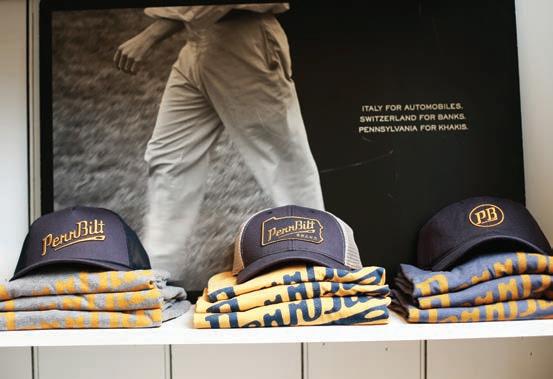
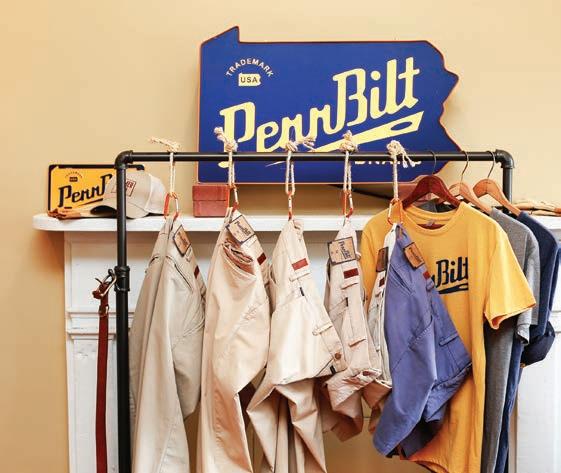







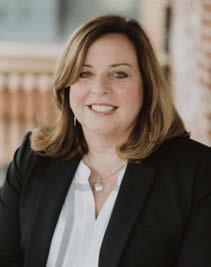





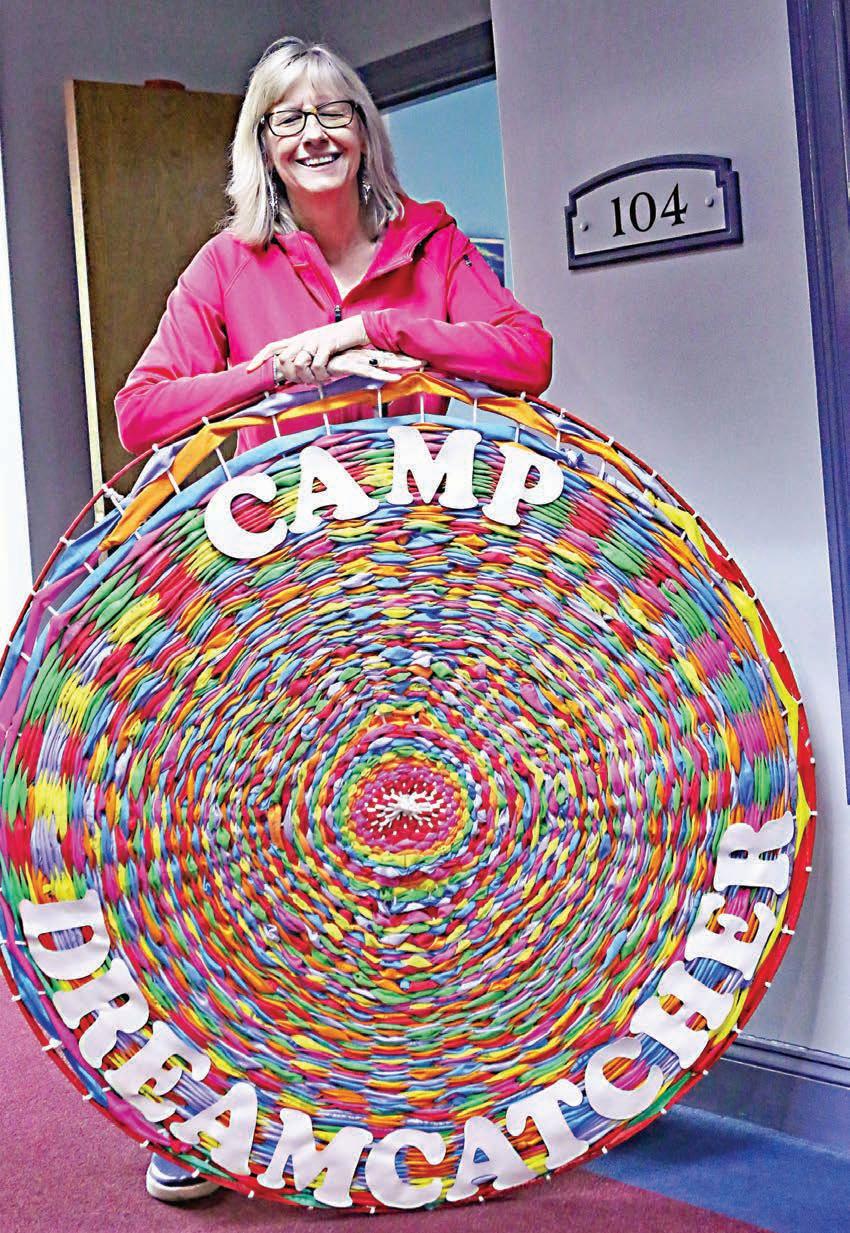
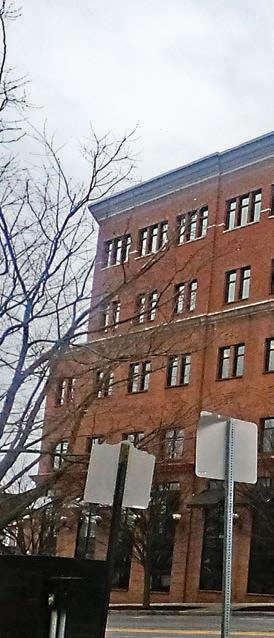
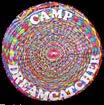 By Chris Barber Contributing Writer
By Chris Barber Contributing Writer
The eyes of Kennett Square will be focused upward on Sept. 29, gazing at a unique fundraiser brought to town by Camp Dreamcatcher.
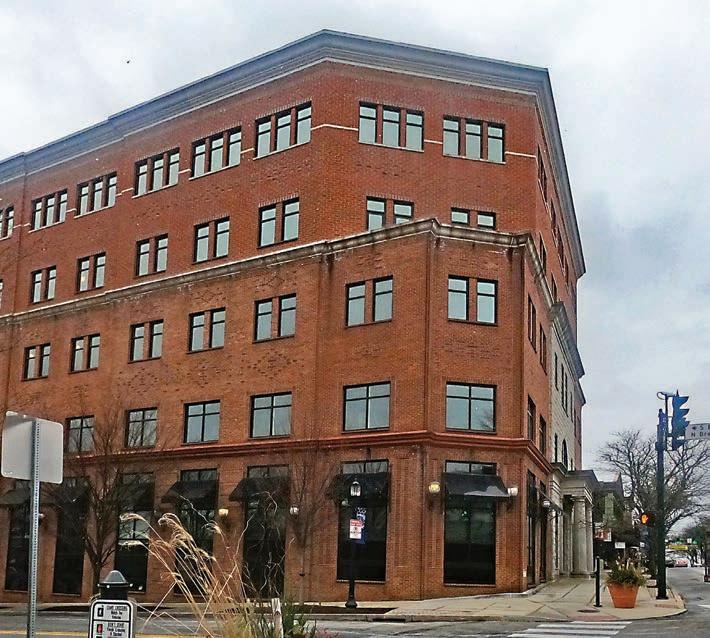
Patty Hillkirk, executive director of this nonprofit that caters to the needs of children and their families affected by HIV/AIDS, has announced that volunteer contribution solicitors—referred to as “Superheroes” —will be rappelling down Franklin Center Building all through the day.
At five stories, Franklin Center is the tallest building in town. It sits at the corner of Broad and State streets.
Hillkirk said she has been told that this is the first time for a rappelling event like this in Chester County. This is also a first for Kennett Square and is anticipated to attract a wide audience on the ground. It will go on rain or shine.
The resource for the project is a company known as Over the Edge. It is a special events
Continued on Page 54
Continued from Page 53
company that provides signature events for nonprofit organizations across Canada and the United States.
Its staff of rope technicians have helped raise over $125 million with non-profit partners, hosted more than 1,200 rappelling events, and maintained a perfect safety record through their 10 years of operation.
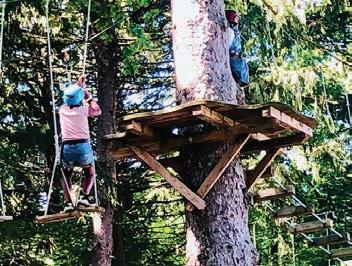

Over the Edge provides the licensing, the safety procedures and the safe rigging of the rappellers. Hillkirk said she has had her eye on this company and its mission for several years, but due to limited licensure of the events, it was not available until this year.
“Now that we have a license, we’re going to hang onto it in the future,” she said.
She added that there are upcoming meetings to explore the details, but certain facts are known already.
The rappellers will be coming down the building
Continued on Page 56
Based in Kennett Square and founded in 1996, Camp Dreamcatcher is an organization that provides education, counseling and opportunities to young people affected by HIV/AIDS.





Continued from Page 54
two-at-a-time, six times an hour. The event will begin at 9 a.m. and conclude at 5 p.m.
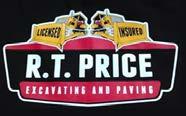

Hillkirk is currently weighing which side of the building they should descend, with consideration of where onlookers will stand and what will offer the best view. She also is hoping to attract entertainment and food trucks throughout the day.

She is aiming for 75 rappellers in total for that day. As of mid-May, 20 rappellers had signed up.
The proceeds of this event, anticipated at $100,000, will support Camp Dreamcatcher’s late August program at Camp Saginaw, which is staffed by many counselors with various areas of expertise.
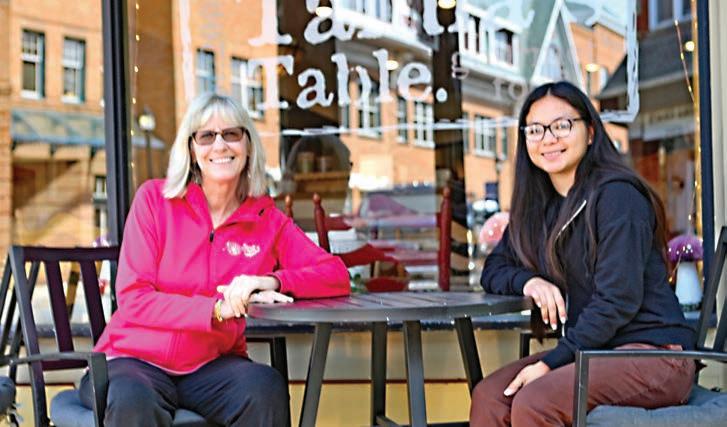
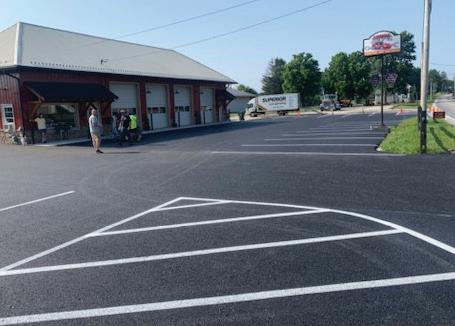


Continued from Page 56
In addition to special events, Camp Dreamcatcher routinely attracts sponsors who support its work.
One very important sponsor is Genesis Healthcare, which is providing the building for the rappelling event.
“Genesis HealthCare is pleased to be able to offer the use of our Franklin Center Building for this very exciting event. We support Camp Dreamcatcher in its mission to bring joy to children coping with HIV/AIDS,” Genesis HealthCare Campus and Community Relations director Ginger Meyer said.
Other sponsors include Philly AIDS Thrift, LBG Properties, Taylor Oil and Propane Inc. and The Market at Liberty Place.

Camp Dreamcatcher provides free therapeutic and educational programs to HIV/AIDS impacted youth. It offers the only therapeutic camp program for children coping with HIV/AIDS on the East Coast, and has served over 6,000 young people in their 27 years of service.

Hillkirk founded Camp Dreamcatcher, prompted by her experience with a friend who had AIDS and after she saw a news segment on television about an AIDS camp in 1995.

In August of 1996, she opened the first camp. The sites have varied through the years. The past several years of Camp Dreamcatcher have been at Camp Saginaw just outside of Oxford. In past years they have also held the camp at Sunset Hill, Camp Tweedale, Paradise Farm and the Westtown School.
Hillkirk said Camp Dreamcatcher is a place that welcomes children who are HIV-positive or whose families have been affected by AIDS. The camp provides a safe and accepting place for children ages 5 through 13 who in many cases have suffered trauma or isolation. Its programs includes traditional camping activities– arts, swimming, sports, as well as therapy sessions.
She issued this statement:
“I am thrilled to bring the Catching Dreams Over the Edge Event to Kennett Square. This is our biggest fundraiser of the year, and our goal is to raise $100,000 to support our programs. We are grateful to Genesis HealthCare, and all of our event sponsors, for supporting the event. They are truly making dreams come true for the children served by Camp Dreamcatcher.”
People who are interested in taking part in rappelling and raising the $1000 sponsorship should go online to https:// fundraise.givesmart.com/vf/DREAMOTE, where there is an application form.

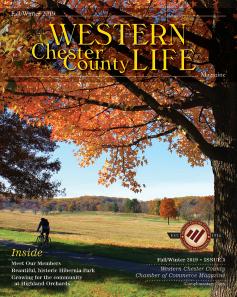
from each community in the form of features, proles, history, entertainment and home and garden stories. Our “coffee table “ keepsake format with extensive direct mail appeals to a wide variety of advertisers
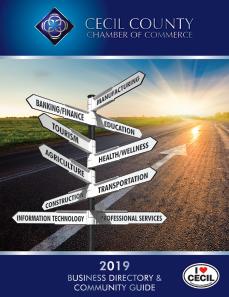

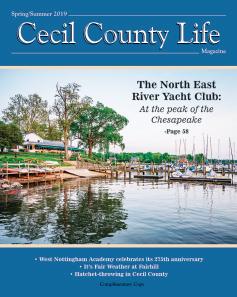

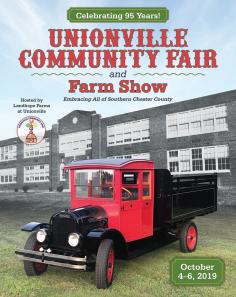

In the days and weeks following his severe accident last August, Barry Fragale found hope in the love he received from his family and his friends. In a time of crisis, Kennett Square responded and they haven’t stopped, as they continue to lift his spirit and nourish his soul
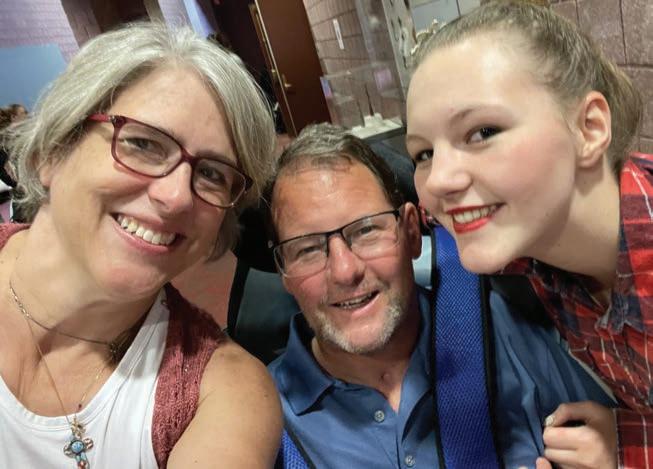
In our desire for happiness and contentment, we are preordained to wish for the safe and proper order of things.

In a cruel twist, however, we are also utterly helpless to the unanticipated and the unknown. We cannot forecast the arrival of the man with the weapon. Our intuition is not strong enough to stop the planes above us from slamming into the towers above. On August 14, 2022 as he rested on a boogie board just off the coast of Bethany Beach in Delaware, Barry Fragale could not have possibly known about the wave that was coming at him and how its power would immediately, resoundingly and forever reshape the course of his life. * * * *
If it is indeed true – if the conversational center of a small town is found in its barber shops -- then the Fragale Brothers Barber Shop, wedged into a link of small businesses on South Union Street in Kennett Square -- joins its hair-cutting colleagues in town as the mother lode for scuttlebutt, laughter and the latest local news, and where customers can be guaranteed that its two owners –Mike and Barry Fragale – will pull them into the fold. From the time they took over the business in 2001, the Fragales have known the heads of four generations of locals, memorized nearly every face and archived their stories practically to memory.
For the Fragale brothers, serving as town criers with scissors in Kennett Square is the right of being indoctrinated into a town you were born in. Raised in a small house on Cope Road, Barry and Mike grew up in the family business – his father had been a barber in town for years.
“After I graduated from Kennett High School, I went to barber school and when I got out, there wasn’t enough room in my father’s shop,” Barry said. “So I went up to Burton’s after one of Bob’s barbers left. I stayed there for four years, and then came down to Union Street.
“It was at Burton’s that I learned that a barber needs to have an open mind, and it was there that I began to realize the importance of listening to my customers.”
Compacted within one square mile, the borough of Kennett Square exists for the most part as its own universe of humanity, and where the design of an entire life can be conceived, molded and made possible. After moving from his childhood home to a condo in the borough, Barry

Continued from Page 62
met and married Monica Thompson, who was then a reporter with the Kennett Paper, whose offices were right around the corner from the barber shop. Together, they moved into a house in the borough that was built in 1955, and it was in the borough where they have raised their daughters Mia and Emilie.
If Kennett Square served as the center of Barry and Monica’s life, then Bethany Beach was the equivalent of an occasional family destination, where Barry visited as a teenager, and where he and Monica took day trips with the kids to the beach during summers.
In August of 2022, the Fragales accepted an invitation to join Emilie’s friend Isabelle and her family at Bethany Beach for the weekend. Barry took the two-hour drive on Saturday, August 13, and was joined by Monica and Mia on Sunday.
When they arrived at the beach at Water’s Edge, the ocean water was made warmer by the heat of the August sun, and it seemed to invite Barry to lay across a boogie board and enjoy the ride. He began heading farther off shore – 30 feet, 40 feet away in four feet of water. His friend Matt Taylor was with him. So were Emilie and Isabelle.
Described as a “rogue wave,” an unexpected thrust of swell suddenly rose behind him and swallowed Fragale, slamming him head first into the ocean floor and leaving his immovable body to wash itself to the shore.
Seeing that her father was having difficulty breathing and swallowing sea water, Emilie held her father in an upright position by leaning against his back, while she frantically called for help.
“Emilie kept telling me, ‘Dad, get up! Dad, get up!’” Barry said. “I looked up and could see the water coming over my eyes and I told her, ‘I can’t get up. I broke my neck.’ I remember the the EMS medics tying me to a board, strapping me down and taking me off the beach with an ATV vehicle.”
Within minutes, he was moved to an ambulance and then airlifted by helicopter to Christiana Hospital.
What Monica saw became an unraveling of snapshots. The arrival of the ambulance. The throttle of the helicopter’s blades high above her. Barry being transported from the ambulance to the helicopter. Watching it jut away in the distance and eventually escape from view
For the next two hours, while the girls remained with Isabelle and her family in Bethany Beach, Monica drove northbound alone through the thicket of Route 1 beach traffic to her husband two counties away.
“The entire drive was surreal,” she said. “I remember

calling Barry’s family, then calling my family, and praying a lot and waiting to hear from the hospital. When I finally arrived, they were taking Barry into the emergency room to operate.”
Barry was diagnosed with a cervical spine cord injury and a broken neck, and received two emergency surgeries – one on Aug. 14 to stabilize his spine and the other on Aug. 16 to relieve the swelling in the spinal cord.
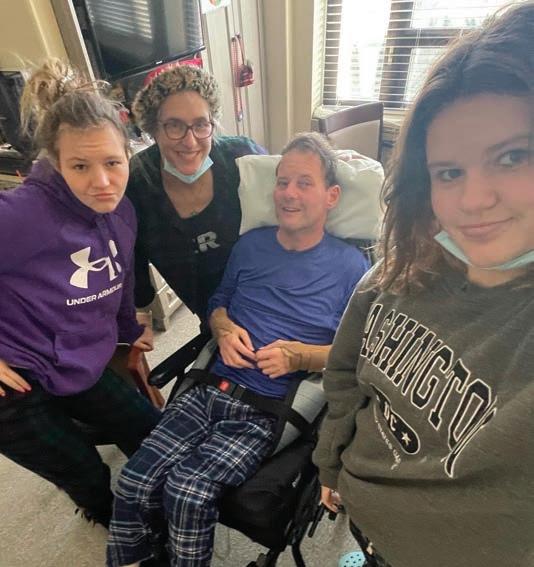
Eventually, the broken neck healed on its own, but Barry was classified as a C4 incomplete quadriplegic, which involves the weakness or paralysis of all four limbs. Like others who live with this condition, Barry will eventually be able to improve his sensory and motor impairments and his quality of life. * * * *
After his surgeries, Barry spent three weeks in the ICU unit at Christiana Hospital. Monica spent ten hours a day with Barry at Christiana, and when she wasn’t at the hospital, she was soldiering through a mountain of other obligations and pressures.
“The more time passed, the more terrifying it got because everything Barry used to do, I now had to do and I realized how much I took a lot of the little things that Barry did for granted,” Monica said.
Continued on Page

Continued from Page 64
Through the thick fog of darkness, a bright light began to shine. Neighbors came by the Fragale home with home-cooked meals. They invited Emilie and Mia over for dinner. Jim Thompson, Barry’s brother-in-law, began a Go Fund Me campaign to help defray the Fragale’s costs that would likely not be covered by insurance, such as mobility aids and home alterations.
“Barry and his family have always been selfless when it comes to others and now find themselves in need of compassion,” Thompson wrote.
Within hours of his posting, friends, family and complete strangers began a floodgate of donations: $10, $25, $50, $100, $500 and more, and by the end of the first day, the account had raised $30,000, and by the end of the first week, it showed no signs of leveling off. People who did not even know Barry would stop by the barber shop to make a small contribution or have Mike give them the latest updates on his brother’s progress. Local, regional and Philadelphia media covered Barry’s story.
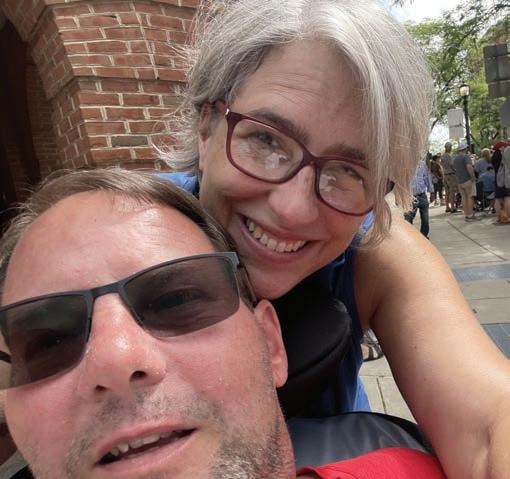
In stores and shops along State and Union streets during the summer and fall of 2022, one of the most commonlyasked questions became, “How’s Barry doing?”
When Thompson closed the Go Fund Me account last November, 935 contributors had donated over $131,000 – which is now securely held in a trust for Barry.
In September, Barry was transferred to Magee Rehabilitation Hospital in Philadelphia, where he continued to receive intensive care therapy for the next month. Since October 28, 2022, he has lived in Room 315 at the Pocopson Home in West Chester as a skilled rehab patient – a space that fits his adjustable bed, his manual wheelchair and dozens of cards and letters and gifts he continues to receive from his family and friends that take up nearly the entirety of the shelves that he faces from his bed.
As part of Barry’s therapy at Pocopson, Monica, Mike and other members of the family apply passive range of motion to stimulate his body’s joints. While progress is measured by slight movements in his neck, arms and feet and pockets of feeling in other parts of his body, it is light years removed from when Barry was in recovery at Christiana, when he could not move and breathed through a ventilator.
Every week when he visits his friend at Pocopson, Richard Forte brings a different biblical quote with him, all of which are now kept on a shelf and clearly visible from Barry’s bed. One quote, leaning at the top of the

shelf, stands most prominent:
“I can do all things through Christ who strengthens me.” Philippians 4:13
“All of my friends and family continue to inspire me,” Barry said. “When I am weak, Monica has kept me strong. My siblings Mike and Kathy continue to visit me every day and my daughters…my daughters…I am blessed to have them in my life.”
“The people in our lives have been amazing and awesome and overwhelming,” Monica said. “We have neighbors who take care of us. His customers continually ask what more they can do for Barry.”
When he returns home later this summer, Barry will move into converted three-season porch that will be retrofitted to include a bedroom, an access ramp to accommodate his wheelchair and a wheel-in shower. A self-described electronic novice, he looks forward to communicating through the use of an eye-controlled computer. He wants to occasionally stop by the barber shop to catch up with his customers and share the local gossip and bring up memories of growing up in Kennett Square.
He wants to again live the most normal life imaginable.

Continued from Page 66
In the last year of his life, with his body wracked by the ravages of terminal cancer, the singer-songwriter Warren Zevon paid a visit to his friend David Letterman on “Late Night With David Letterman” on October 30, 2022. It would be his final public appearance; Zevon died on Sept. 7, 2003. Toward the end of the interview, Letterman asked Zevon if he saw the meaning of his life differently after his diagnosis. Zevon replied, “Life is more valuable now,” he said. “You are reminded to enjoy every sandwich.”
“I know more now about life than I did before,” Fragale said through tears from his bed at Pocopson. “I know now that you should tell everyone that you love them, and never be afraid to give them a big hug, especially your children and your wife, because none of us know whether or not we will be able to do it again.”
Every night at Pocopson, Barry Fragale enjoys his sister-in-law Deana’s peanut butter and jelly sandwiches that she brings for him every day. They are the gold standard of peanut butter and jelly sandwiches. He plans to continue to enjoy the sandwiches when he returns home to Kennett Square.

To learn more about spinal cord injuries and modern treatment, visit the Christopher & Dana Reeve Foundation website at www.christopherreeve.org.
To contact Staff Writer Richard L. Gaw, email rgaw@chestercounty.com.



We encourage local organizations, schools, civic and fraternal groups and churches to submit news releases.


